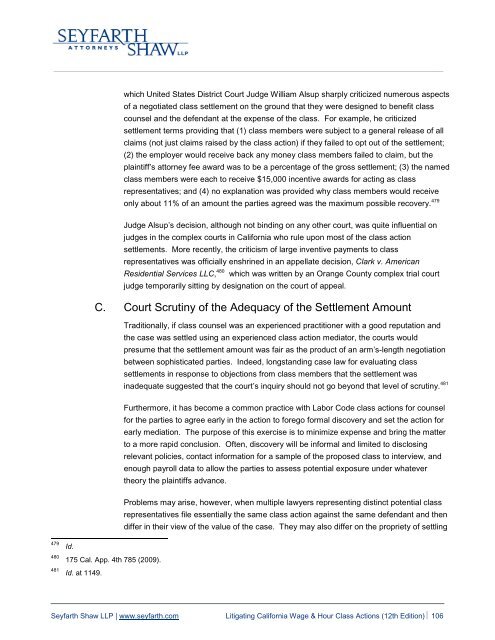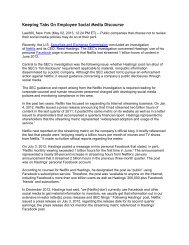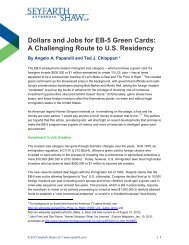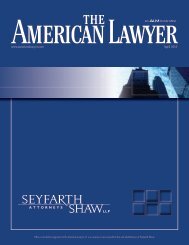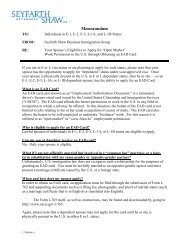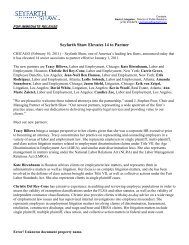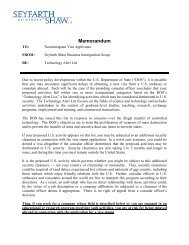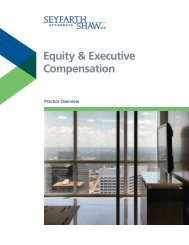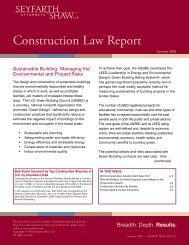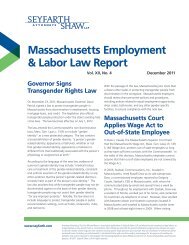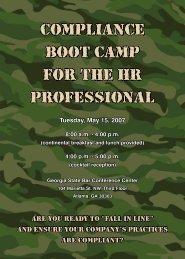Litigating California Wage & Hour and Labor Code Class Actions
Litigating California Wage & Hour and Labor Code Class Actions
Litigating California Wage & Hour and Labor Code Class Actions
Create successful ePaper yourself
Turn your PDF publications into a flip-book with our unique Google optimized e-Paper software.
which United States District Court Judge William Alsup sharply criticized numerous aspects<br />
of a negotiated class settlement on the ground that they were designed to benefit class<br />
counsel <strong>and</strong> the defendant at the expense of the class. For example, he criticized<br />
settlement terms providing that (1) class members were subject to a general release of all<br />
claims (not just claims raised by the class action) if they failed to opt out of the settlement;<br />
(2) the employer would receive back any money class members failed to claim, but the<br />
plaintiff’s attorney fee award was to be a percentage of the gross settlement; (3) the named<br />
class members were each to receive $15,000 incentive awards for acting as class<br />
representatives; <strong>and</strong> (4) no explanation was provided why class members would receive<br />
only about 11% of an amount the parties agreed was the maximum possible recovery. 479<br />
Judge Alsup’s decision, although not binding on any other court, was quite influential on<br />
judges in the complex courts in <strong>California</strong> who rule upon most of the class action<br />
settlements. More recently, the criticism of large inventive payments to class<br />
representatives was officially enshrined in an appellate decision, Clark v. American<br />
Residential Services LLC, 480 which was written by an Orange County complex trial court<br />
judge temporarily sitting by designation on the court of appeal.<br />
C. Court Scrutiny of the Adequacy of the Settlement Amount<br />
Traditionally, if class counsel was an experienced practitioner with a good reputation <strong>and</strong><br />
the case was settled using an experienced class action mediator, the courts would<br />
presume that the settlement amount was fair as the product of an arm’s-length negotiation<br />
between sophisticated parties. Indeed, longst<strong>and</strong>ing case law for evaluating class<br />
settlements in response to objections from class members that the settlement was<br />
inadequate suggested that the court’s inquiry should not go beyond that level of scrutiny. 481<br />
Furthermore, it has become a common practice with <strong>Labor</strong> <strong>Code</strong> class actions for counsel<br />
for the parties to agree early in the action to forego formal discovery <strong>and</strong> set the action for<br />
early mediation. The purpose of this exercise is to minimize expense <strong>and</strong> bring the matter<br />
to a more rapid conclusion. Often, discovery will be informal <strong>and</strong> limited to disclosing<br />
relevant policies, contact information for a sample of the proposed class to interview, <strong>and</strong><br />
enough payroll data to allow the parties to assess potential exposure under whatever<br />
theory the plaintiffs advance.<br />
Problems may arise, however, when multiple lawyers representing distinct potential class<br />
representatives file essentially the same class action against the same defendant <strong>and</strong> then<br />
differ in their view of the value of the case. They may also differ on the propriety of settling<br />
479<br />
480<br />
481<br />
Id.<br />
175 Cal. App. 4th 785 (2009).<br />
Id. at 1149.<br />
Seyfarth Shaw LLP | www.seyfarth.com <strong>Litigating</strong> <strong>California</strong> <strong>Wage</strong> & <strong>Hour</strong> <strong>Class</strong> <strong>Actions</strong> (12th Edition) 106


